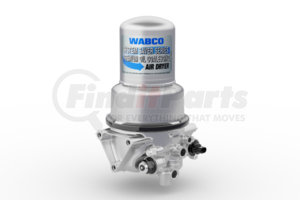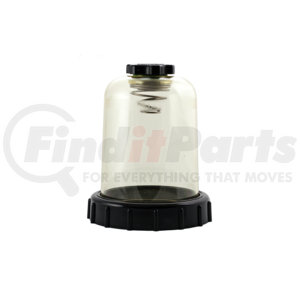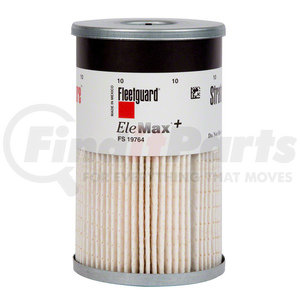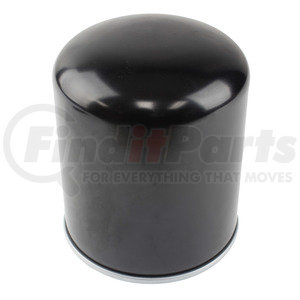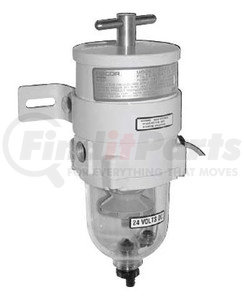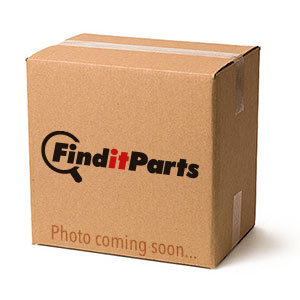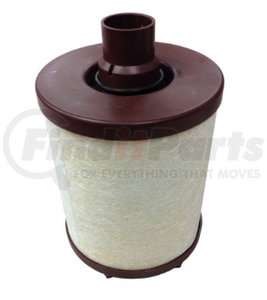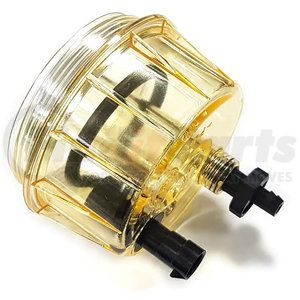RACOR FILTERS CCV6000-08L - Cartridge Crankcase Ventilation - 1-5/8", 12 SAE Port Size, 7.3" Depth
- Part Number
- CCV6000-08L
- Manufacturer
- RACOR FILTERS
- Description
-
Cartridge Crankcase Ventilation - 1-5/8", 12 SAE Port Size, 7.3" Depth
details
$69149
In stock
limited availability at this price!
RACOR FILTERS part description
 California Proposition 65 Warning
California Proposition 65 Warning
Crankcase Ventilation System - Cartridge Crankcase Ventilation Type, CCV6000 Series, 1-5/8", 12 SAE Port Size, 7.3" Depth, Integrated Mounting
Crankcase blow-by gas is produced when combustion gases under high pressure escape past piston rings into the crankcase. As these blow-by gases pass though the crankcase, they become contaminated with oil mist. In enclosed areas, like generator sets or engine rooms, the contaminated gas coats and damages surrounding equipment, resulting in hazardous conditions and the need for costly maintenance. Uncontrolled blow-by oil mist also coats engine after-coolers and turbochargers, which reduces cooling capacity and engine efficiency.
Racor's Crankcase Ventilation Systems prevent this problem by removing mist and contamination in blow-by gases. In closed systems (CCV), the high efficiency filter prevents fouling of the turbocharger and after-cooler. In open systems (CV), it prevents fouling of surrounding equipment and walls, thus allowing clean exhaust to vent directly to the atmosphere.
The systems have stainless steel latches for tool-less element change and a metal housing (steel for the 4500 unit and aluminum for 6000, 8000 & 12000 units) with an epoxy powder coating. They also have a drain check valve, which allows collected oil to return to the crankcase, resulting in drastically reduced oil consumption.
Open systems are acceptable for certain engines and situations. However, in recent years, environmental concerns and legislation to control crankcase emissions have increased significantly. New laws to further reduce the total emissions of engines often make it necessary to close the crankcase breather system. In this case, blow-by gases are routed into the inlet of the turbocharger where they can be burned instead of polluting the environment.
How they work:
CV Series (Open Crankcase Ventilation Systems) - Racor's CV (open) system filters are high-efficiency oil separators, featuring depth-loading, micro-glass fiber Vaporbloc™ media, which is capable of coalescing vapor and contaminants down to 0.3 microns. The resulting filtered and coalesced oil is held in a hose line with a check valve until it can be released to the oil pan via a hose connection. Filtered gasses are released to the atmosphere. The units are designed to handle crankcase flow rates up to 50 cfm (1.42 m3/m) or more when using multiple units.
CCV Series (Closed Crankcase Ventilation Systems) - Racor's CCV (closed) systems also utilize depth-loading, micro-glass fiber Vaporbloc™ media. In these systems, blow-by gasses are not allowed to vent to the atmosphere. Instead, the cleaned and filtered gases are routed back to the inlet of the turbocharger to be burned in the engine. The units are designed to handle crankcase flow rates up to 50 cfm (1.42 m3/m) or more when using multiple units. CCV units feature a unique crankcase pressure regulator with an integral bypass valve. This regulator protects against crankcase over-pressure and under-pressure, thus preventing damage to seals and oil loss.
Use in Marine Applications - Marine diesel engines can benefit from the installation of a combination CCV and air filter/silencer system. The CCV contains Racor's high-performance Vaporbloc™ filter media. Marine air filter/silencers (AF Series) contain washable media and are ruggedly built to provide extended service life.
When installed, the engine crankcase breather is connected to the inlet of the Racor CCV Assembly. The CCV outlet is connected to the engine's combustion air inlet via an air intake connector where filtered blow-by gas is recycled through the combustion process. Oil collected in the CCV sump is returned to the crankcase through a hose and a drain check valve.
Notes on use:
• The only routine maintenance required for a Racor crankcase ventilation system is filter replacement. Typical service life of the high-performance filter in diesel applications is 750 hours. Some variations in service life occur depending on the load profile, engine wear conditions, flow, aerosol mass concentration of crankcase emissions, and soot concentration. The pop-up style indicator on the top of the CCV (closed system) unit alerts the operator when such a filter change is needed (remote indicator is available as an option: CCV55615-01.)
• CV Series (open system) units do not have an over-pressure indicator so regular filter maintenance and crankcase pressure monitoring must be performed separately. Not following these requirements may lead to damaged seals and oil loss.
• CV (open system) units are all “Non-Bypass”, and therefore as the filter plugs, crankcase pressure will increase. They can only be used if regular filter maintenance is performed and there are crankcase over-pressure safeguards in place. Not following these requirements may lead to damaged seals and oil loss.
• “Non-Bypass” versions of the CCV (closed system) filters have the same limitation as the CV (open crankcase) units (i.e., as the filter plugs, crankcase pressure will increase). They can only be used if regular filter maintenance is performed and crankcase over pressure safeguards are in place. Not following these requirements may lead to damaged seals and oil loss.
How to select:
1. Choose Open System or Closed System
2. Choose flow rate required
Crankcase flow rate can be obtained from the engine manufacturer, by direct measurement with a mass airflow sensor or through an approximate calculation. In a closed system, simply divide the rated horsepower (HP) by 40 to get cfm (rated kW/30). In an open system, divide the rated horsepower by 20 (rated kW/15). While various factors can alter the accuracy of this formula, such as modern piston improvements or engine wear, this is usually a good estimation of flow.
Formulas for calculating crankcase blow-by flow are outlined below:
Closed system: divide rated HP by 40 to get cfm. (kW/1000 = m3/m)
Open system: divide rated HP by 20 to get cfm. (kW/500 – m3/m)
3. Choose bypass, non-bypass, or “intermittent duty” (1 cfm unit) function:
4. Choose filter media density/efficiency
5. Choose Inlet on right or left side
Markets:
• Agriculture
• Construction
• Power Generation
• Oil and Gas
• On- or Off-highway
• Marine
Applications:
• Diesel Engines
Benefits:
• Prevents fouling of critical engine components, such as turbochargers and after-coolers by removing oil contamination from engine bypass gases.
• Reduces operating costs and improves safety in enclosed areas, where contaminated gas from engines can coat and damage surrounding equipment, resulting in hazardous conditions and the need for costly maintenance.
• Minimal maintenance requirements. Typical service life of the high-performance crankcase ventilation system in diesel applications is 750 hours.
• Drain check valve allows collected oil to return to the crankcase, resulting in drastically reduced oil consumption.
• Available in open (CV) or closed (CCV) configurations to meet the unique requirements of customers’ engines.
• Suitable for use in marine applications. ‘
Features:
• Racor crankcase ventilation units for closed or open systems
• High efficiency oil separation down to 0.3 micron
• Unique crankcase pressure regulator
• Replaceable high-performance filter
• Depth loading, micro-glass fiber coalescing Vaporbloc™ media
• Steel housing with epoxy powder coating
• Drain check valve
• Left or right inlet ports
• Closed units offer bypass or non-bypass options
• Closed units offer pop-up style, or remote indicator of bypass condition
• Compatible with flow rates up to 50 cfm (1.42 m3/m)
• Continuous operating temperature range -40° to 240°F (-40°C to 116°C)
Optional Kits:
• CCV Fitting/Hose Kits
• CCV 90° Hose Adapters
• CCV hose Barbs
• Bulk Hose Kits
• Hump Hose Fittings
• CCV8000 Conversion Kits (covert to CCV12000)
• CCV Heater Kits
• Electronic Remote Filter Gauge
• Heavy-Duty Wear Spacers
• Tap Sleeves
Specifications
| Series Type | Cartridge Crankcase Ventilation |
| Brand | Racor |
| Series | CCV6000 |
| Filtered Medium | Engine Blowby Gas |
| Mounting | Integrated. See Product Support tab |
| Replacement Element | High: CCV55274-08, Ultra: CCV55274-10 |
| Port Size | 1-5/8", 12 SAE |
| Drain | 1/4" NPT (Engine block check valve fitting) |
| Connection Style | #6 JIC x 2 (Swivel Fittings) |
| Hose I.D. | 3/8" (3 ft) |
| Material | Die cast head, glass filled nylon and black powder epoxy-coated aluminium bowl |
| Indicator Type | Element Bypass/Change Indicator |
| Pressure Regulator Type | Integral crankcase pressure regulator |
| Heater | Optional CCV55462 |
| Interface Option | Remote By-pass Indicator Kit CCV55615-01 |
Product Description
Crankcase Ventilation System - CCV6000 Series, 1-5/8", 12 SAE Port, 7.3" Depth
RACOR FILTERS CCV6000-08L Cross Reference
We have 1 alternatives for the CCV6000-08L by RACOR FILTERS:
Racor Filters® is a renowned name in the automotive and trucking industry. It specializes in the production of commercial filtration products such as fuel filters, oil filters, and engine-air filters. It started its operation in 1972 in Modesto, CA, and over a decade later, it was acquired by Parker Hannifin, a worldwide leader in motion and control technologies. Today, Racor Filters is known by many as Parker Racor, and it continues to develop more effective filtration media to keep up with customers' demands. All Racor filters are made to the highest quality standards to meet stringent new engine performance requirements and ensure longer service life.
Don't know your part number?
Take a photo and we'll identify it!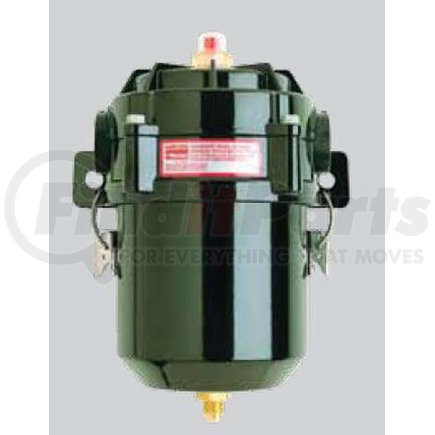

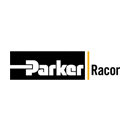
 California Proposition 65 Warning
California Proposition 65 Warning
